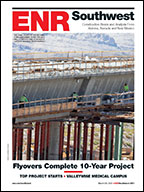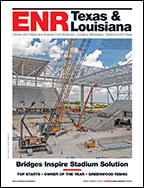
The National Association of City Transportation Officials (NACTO) would like to see transportation-design policy start at the city and state levels, not the federal level. With that in mind, the Washington State Dept. of Transportation is adopting the group's new "Urban Street Design Guide."
The guide includes a chapter on interim design strategies before a major buildup; a discussion of design controls; showing the street as a physical place; and real-life examples of the impacts of design decisions on that space.
"As with most of our projects, we have to tailor suggestions to the street and neighborhood in which we're working," says Seleta Reynolds, San Francisco's municipal transportation-agency section leader in charge of livable streets. "In this way, the NACTO guide's approach to provide a broad spectrum of options and focus on design principles fits perfectly with our approach."
Kathleen Davis, WSDOT highways and local program director, says the design guide can prove beneficial as state highways that run through urban sites require cooperation at the local level.
Released in 2013, following on the heels of NACTO's 2011 urban bicycling guidelines, the guide was shaped by a steering committee from NACTO's major member cities and some smaller cities. "We had a lot of lively discussions early on about whether or not what would work in Houston would apply in Portland," says Reynolds, who hopes California's DOT adopts the guide. "The guide does a good job of presenting and synthesizing design principles that should be applicable in most U.S. cities, but the discussion about how to flesh out the devil in the details will vary."
David Vega-Barachowitz, Designing Cities Initiative director for NACTO, expects more states—including Massachusetts, California, Tennessee and Delaware—to sign on soon. "Adoption is really only as significant as the projects that back it up," he notes.
Complete Streets
NACTO's manuals reflect a larger "Complete Streets" trend that emphasizes transportation infrastructure as part of an overall emphasis on livability and safety. It began to take hold in the late 1990s, says Roger Millar, director of Smart Growth America's Leadership Institute and National Complete Streets Coalition, which also has released design guidelines—as has the Congress for the New Urbanism, working with the Institute of Traffic Engineers.
All these guidelines complement the official recommendations for road widths, alignments and other traffic-safety-oriented considerations in the so-called "Green Book,'' issued by the American Association of State Highway and Transportation Officials. AASHTO began modifying that official guide for more flexibility in the late 1990s (ENR 1/12/98 p. 34).
"It is not about being prescriptive, saying you have to have this or that," Millar says. "It's about focusing the design on people and places, not cars and traffic. Streets are about social and economic exchange. Efficient movement of vehicles is part of that, but not the focus," he says.






Post a comment to this article
Report Abusive Comment